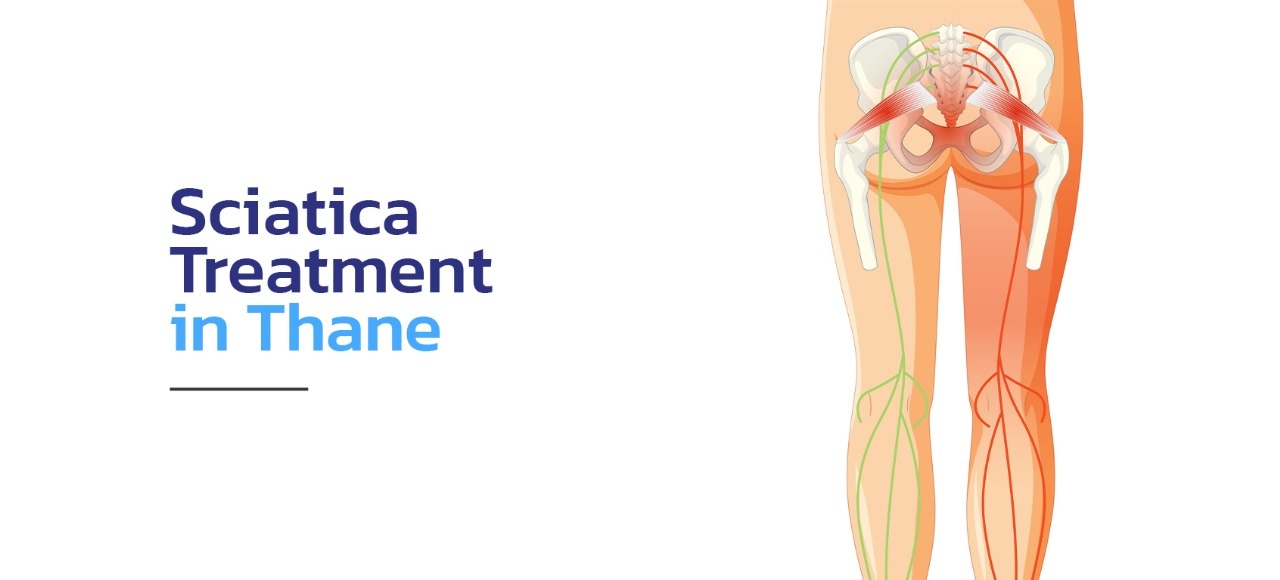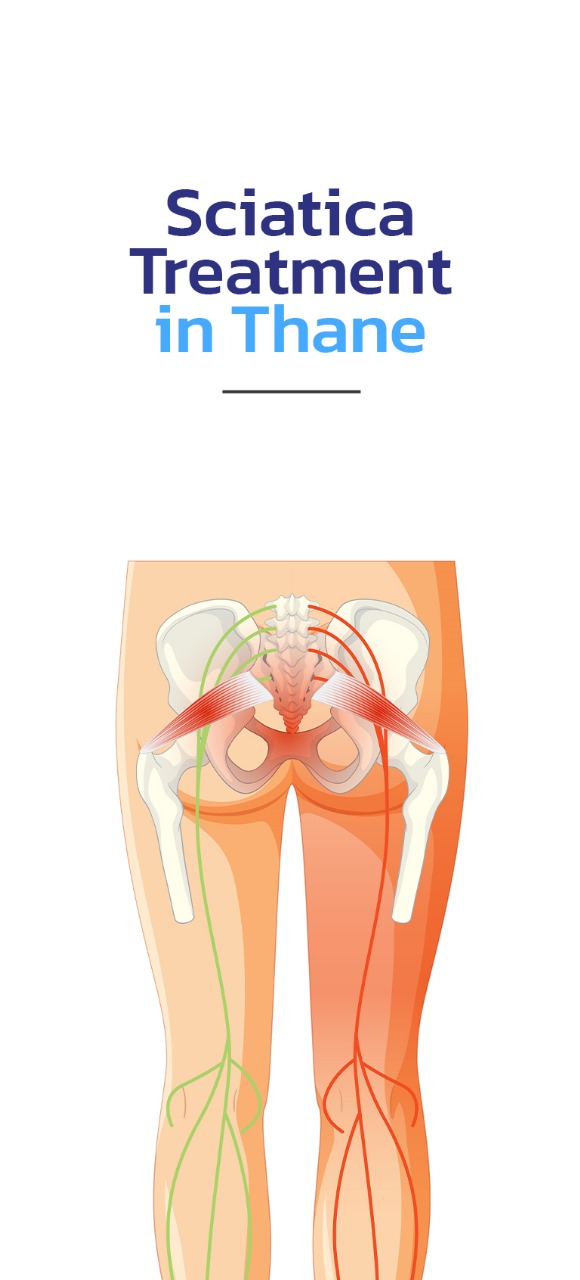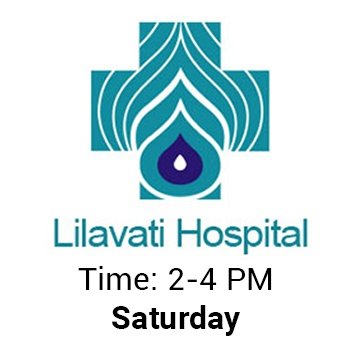Advance Spine Clinic
in Heart of Thane


Celebrate Freedom from Sciatic Pain with Specialized and Compassionate Sciatica Treatment in Thane - Your Gateway to a Life of Comfort and Mobility
Sciatica is a widespread and frequently painful condition impacting countless individuals globally. In this comprehensive guide, we will delve into the details of sciatica, exploring its causes, symptoms, and effective treatment options, particularly focusing on sciatica treatment in Thane. Whether you’ve recently received a diagnosis for sciatica or are merely curious about this condition, this article will offer valuable insights to enhance your understanding and management of it.
MEET DR. PRIYANK PATEL
Dr Priyank M Patel is a Co-Founder and Director of the first integrated spine organization; We Are Spine and treats patients at premiere institutions across Mumbai.
He is dedicated to investigating, evaluating, treating and educating patients with conditions of the spine and the spinal cord using advanced, conservative and sometimes traditional techniques.
Learn about various spine conditions, symptoms and treatments through our website or visit us at our clinic for a personal consultation.

16000 +
Patients
4000+
Surgeries
7+
Surgeons Team
5*
Rating
Our Services
- Sciatica
- Slipped Disc
- Scoliosis
- Kyphosis
- Cervical Spondylosis
- Broken Neck & Back
- Spinal Cord Injury
- Spondylolisthesis
- Spinal Stenosis
- Osteoarthritis
- Tumor
- Syringgomylia
- Cauda Equina Syndrome
- Ankylosing Spondylitis
Plan Your visit
Make a Appointment
Send Med. Records
Working Hours





other locations
APOLLO SPECTRA HOSPITAL
Ujaynagar Compound, Main Gate, Opposite Deaonar Bus Depo, Chembur, Mumbai, Maharashtra 400088
DOCTOR HOUSE
Cumbala Hill, Pedder Road, Mumbai, Maharashtra 400026
JUPITER HOSPITAL
Eastern Express Highway, Service Road,, Next To Viviana Mall, Thane West, Maharashtra 400601
KLS MEMORIAL HOSPITAL
Narvir Tanaji Malsure Marg, Navpada, Irla,, Vileparle West, Mumbai, Maharashtra 400056
BREACH CANDY HOSPITAL
Cumballa Hill, Bhulabai Desai Road, 60A, Mumbai, Maharashtra 400026
THE SPINE CLINIC
Shop no.1, Amrutraj, Gurukul road, panchpakhadi,, Thane west., Thane, Maharashtra 400602
Our Reviews
What Is Sciatica?
Sciatica treatment is essential for those experiencing the discomfort of sciatica. Sciatica is not an independent medical condition but a collection of symptoms linked to an underlying problem in the lower back or lumbar region. This condition arises when the sciatic nerve, the body’s longest nerve, becomes irritated or compressed. Extending from the lower back through the buttocks and down each leg, the sciatic nerve’s impairment typically leads to pain, tingling sensations, or numbness along its path. If you’re in Thane and grappling with sciatica, seeking prompt and effective sciatica treatment in Thane can help alleviate these distressing symptoms.
Causes of Sciatica
Herniated Discs
One of the primary causes of sciatica is herniated or slipped discs. When the soft, gel-like center of a spinal disc protrudes through the tough outer layer, it can press against the sciatic nerve, causing pain and discomfort.
Spinal Stenosis
Spinal stenosis refers to the narrowing of the spinal canal, which can put pressure on the sciatic nerve. This condition is more common in older adults and can result from age-related degeneration of the spine.

Piriformis Syndrome
The piriformis muscle, located in the buttocks, can sometimes irritate or compress the sciatic nerve, leading to sciatica symptoms. This condition is known as piriformis syndrome.
Injury or Trauma
Injuries to the lower back, such as fractures or dislocations, can damage the sciatic nerve, leading to sciatica. Additionally, muscle spasms and inflammation can contribute to the development of this condition.
Symptoms of Sciatica
Radiating Pain
The hallmark symptom of sciatica is a sharp, shooting pain that radiates from the lower back down the leg. This pain can be debilitating and may worsen with movement.
Numbness and Tingling
Many individuals with sciatica experience numbness and tingling sensations along the sciatic nerve’s path. This can affect the buttocks, thigh, calf, and even the foot.
Muscle Weakness
Sciatica can lead to muscle weakness in the affected leg, making it challenging to perform everyday activities like walking or climbing stairs.

Pain Aggravated by Sitting
Sitting for extended periods can exacerbate sciatica symptoms, often making it difficult for individuals to sit comfortably for long durations.
Two common symptoms of sciatica are radiating pain that travels from the lower back down the leg and numbness or tingling sensations along the same path. If you experience these symptoms, it’s advisable to consult a sciatica treatment specialist surgeon in Thane or a sciatica treatment doctor near me for evaluation and treatment.
Risk Factors for Developing Sciatica
Several risk factors can increase the likelihood of developing sciatica. These include
- Age: Sciatica becomes more common as people age, as wear and tear on the spine can lead to conditions like herniated discs or spinal stenosis, which are common causes of sciatica.
- Occupation: Jobs that require heavy lifting, prolonged sitting, or driving for extended periods can increase the risk of developing sciatica, as they put added stress on the lower back.
- Obesity: Excess body weight can strain the spine and increase the risk of conditions like herniated discs or spinal stenosis, which can lead to sciatica.
- Diabetes: Individuals with diabetes may have an increased risk of nerve damage, making them more susceptible to sciatica.
- Prolonged Sitting: People who spend long hours sitting, especially in an improper posture, can develop sciatica over time due to added pressure on the lower back and spine.
- Heavy Lifting: Regularly lifting heavy objects, especially with poor lifting techniques, can contribute to the development of sciatica.
- Genetics: A family history of sciatica or related spinal conditions may increase an individual’s risk.
- Sedentary Lifestyle: Lack of regular physical activity and poor core muscle strength can make the spine more vulnerable to sciatica.
- Smoking: Smoking can impair blood flow to the spine, potentially increasing the risk of spinal disc damage and sciatica.
- Trauma or Injury: Previous injuries or trauma to the lower back can leave the spine more susceptible to sciatica.
While these risk factors can increase the chances of developing sciatica, it’s essential to note that anyone can be affected, and the condition can often be managed with proper care and treatment.
Complications Associated with Sciatica: Risks and Consequences
Sciatica can lead to several complications, including
- Chronic Pain: For some individuals, sciatica can become a chronic condition, resulting in long-term pain and discomfort.
- Muscle Weakness: Persistent sciatica can cause muscle weakness in the affected leg, potentially affecting mobility and daily activities.
- Loss of Sensation: Prolonged pressure on the sciatic nerve can lead to loss of sensation in the affected leg or foot.
- Reduced Quality of Life: The pain and discomfort associated with sciatica can lead to a reduced quality of life, affecting one’s ability to work, engage in physical activities, or enjoy daily life.
- Incontinence: In rare cases of severe sciatica, there may be a loss of bladder or bowel control, which requires immediate medical attention.
- Nerve Damage: Untreated or severe sciatica can result in nerve damage, potentially leading to long-lasting neurological issues.
- Increased Risk of Falls: Muscle weakness and numbness in the leg can increase the risk of falls and injuries.
It’s important to seek prompt medical attention and appropriate treatment for sciatica to minimize the risk of these complications. Early intervention and proper management can help prevent long-term consequences and improve the chances of a successful recovery.
Diagnosing Sciatica

If you suspect you have sciatica, it is crucial to consult a sciatica treatment specialist in Thane. Your healthcare provider, specializing in sciatica, will conduct a thorough physical examination, review your medical history, and may recommend imaging tests such as X-rays or MRI scans to confirm the diagnosis. For precise evaluation and targeted treatment, rely on the expertise of a Sciatica Treatment Specialist Surgeon in Thane.
Home Management and First Aid Tips for Sciatica Relief
Home management and first aid for sciatica can help alleviate discomfort while awaiting professional treatment or during mild episodes. Here are some tips-
- Rest: Give your back a break by lying down on a firm surface, such as a carpeted floor or mattress, with a pillow under your knees to relieve pressure on the lower back.
- Heat and Cold Therapy: Applying a heating pad or an ice pack to the affected area can help reduce inflammation and ease pain. Use cold packs in the first 48 hours, then switch to heat.
- Over-the-Counter Pain Relievers: Non-prescription pain medications like ibuprofen or acetaminophen may provide temporary relief. Follow the dosage instructions carefully.
- Gentle Stretching: Perform gentle stretching exercises to alleviate muscle tension. Avoid intense or painful stretches.
- Supportive Footwear: Wear shoes with good arch support to reduce pressure on the sciatic nerve.
- Maintain Good Posture: Sit and stand with proper posture to reduce strain on the lower back.
- Avoid Prolonged Sitting: Take regular breaks if your job involves long periods of sitting.
- Avoid Heavy Lifting: Refrain from lifting heavy objects, and use proper lifting techniques if lifting is necessary.
- Physical Therapy: Consult with a physical therapist for exercises and techniques to strengthen the back and improve flexibility.
- Sleeping Position: Sleep on your side with a pillow between your knees to maintain spinal alignment.
It’s essential to consult a healthcare provider for a proper diagnosis and treatment plan, especially if the symptoms persist or worsen. Home management and first aid can offer temporary relief but should not replace professional medical guidance for severe or persistent sciatica.
Treatment Options
When it comes to sciatica treatment in Thane, there are several options available, each tailored to your specific needs-
Conservative Approaches
- Rest: Giving your body the time it needs to heal is essential for effective sciatica treatment in Thane. Avoid strenuous activities that can exacerbate the pain.
- Physical Therapy: In Thane, expert therapists can guide you through targeted exercises and stretches, helping alleviate symptoms and enhance flexibility.
- Medications: Your sciatica treatment doctor in Thane may recommend over-the-counter pain relievers or prescribe medications to manage pain and reduce inflammation effectively.
Epidural Steroid Injections
In some cases of severe sciatica, your sciatica treatment doctor in Thane may propose epidural steroid injections. These injections deliver potent anti-inflammatory medication directly to the affected area, offering relief from pain and reducing inflammation.
Surgery
In rare instances where conservative treatments prove ineffective, surgery may be the most suitable option to alleviate pressure on the sciatic nerve. Thane offers advanced surgical solutions such as discectomy, laminectomy, or spinal fusion to address severe cases of sciatica.
In Thane, your dedicated sciatica treatment doctor will guide you through these treatment options, ensuring that you receive the most appropriate care for your condition.
When Can I Expect Relief After Sciatica Treatment?
The timing of improvement after sciatica treatment can vary depending on several factors, including the underlying cause, the type of treatment received, and individual differences. Some individuals experience relief relatively quickly, while others may take more time. It’s essential to discuss your specific situation with your healthcare provider, as they can provide you with a better estimate based on your diagnosis and treatment plan. In many cases, with proper care and adherence to treatment recommendations, individuals begin to feel relief within a few weeks to a few months. However, complete recovery may take longer, and ongoing management may be necessary to prevent future episodes of sciatica.
Understanding the Expenses of Sciatica Treatment in Thane
When it comes to sciatica treatment in Thane, the cost can fluctuate based on several crucial factors. These variables include the severity of the condition, the chosen treatment approach, and the specific healthcare provider you opt for.
Typically, non-surgical treatments tend to be more cost-effective when compared to surgical interventions. However, it’s important to note that the cost can vary widely, and it’s essential to get a personalized cost estimate from local healthcare facilities or specialists. Additionally, discussing your insurance coverage with healthcare providers can help you better understand the financial aspects of your sciatica treatment. This way, you can make informed decisions regarding your healthcare while considering both your health and your budget.
Why Choose Thane City for Sciatica Treatment
In Thane, you have access to a wide array of treatment options tailored to your unique needs when dealing with sciatica. These options may include:
Medical Treatments
These encompass pain management techniques involving medications and physiotherapy to strengthen the spine and alleviate discomfort caused by sciatica.
Minimally Invasive Procedures
Interventional methods like epidural injections can provide relief by reducing inflammation and relieving pressure on the affected nerves, offering a path to recovery.
Surgical Interventions
In cases of severe or persistent sciatica symptoms, surgical procedures may be necessary to address the underlying causes and alleviate pressure on the spinal nerves. The choice of intervention will depend on your healthcare provider’s assessment of your condition.
It’s essential to note that sciatica treatment plans are highly personalized, taking into account your specific diagnosis and symptoms.
How to Prevent Sciatica: Tips for Protecting Your Spinal Health
Preventing sciatica involves adopting good lifestyle practices and making mindful choices to protect your spinal health. Here are some key strategies
- Maintain a Healthy Weight: Excess weight can add stress to the spine. Maintain a healthy weight through a balanced diet and regular exercise.
- Exercise Regularly: Engage in activities that strengthen the core muscles and support the spine. Yoga and swimming are excellent options.
- Proper Lifting Techniques: When lifting, bend your knees, keep the object close to your body, and use your legs to lift rather than your back.
- Good Posture: Practice proper posture when sitting and standing. Use ergonomically designed furniture and tools if necessary.

- Take Breaks: If your job involves sitting for extended periods, take regular breaks to stand, stretch, and walk around.
- Quit Smoking: Smoking can affect blood flow to the spine, potentially increasing the risk of disc degeneration.
- Stay Hydrated: Proper hydration helps maintain the health of the spinal discs.
- Maintain Ergonomics: Ensure your workspace is ergonomically designed, with a comfortable chair, appropriate desk height, and good lumbar support.
- Stretching: Incorporate regular stretching exercises to maintain spinal flexibility.
- Footwear: Choose shoes with good arch support and cushioning to reduce stress on your spine.
- Strengthen Your Core: A strong core can provide better support for your back and help prevent sciatica.
- Manage Stress: Chronic stress can lead to muscle tension, so practice stress-reduction techniques like meditation and deep breathing.
- Regular Check-ups: Visit your healthcare provider for regular check-ups to address any spinal issues promptly.
While these practices can reduce the risk of sciatica, there are no guarantees. If you experience persistent or severe back pain or other symptoms, consult a healthcare provider for a proper diagnosis and treatment plan.
Specialized Healthcare Provider in Thane
At The Spine Clinic in Thane, we prioritize the spine health of our patients and offer specialized care, including effective sciatica treatment in Thane. Led by the renowned Dr. Priyank Patel, known as the “Backbone Doctor” in Thane, our experienced team is dedicated to providing the highest quality care for various spine-related concerns. Dr. Patel’s exceptional expertise extends beyond Thane, earning him a reputation as a leading spine specialist doctor in Mumbai and the best spine surgeon in Mumbai. Whether it’s medication, physiotherapy, or surgical intervention, our comprehensive approach aims to manage both acute and chronic spine conditions, ensuring that every patient receives personalized care and the opportunity for an improved quality of life. Trust us as your preferred destination for expert spinal care, including sciatica treatment.
If you’re grappling with sciatica in Thane, seeking professional treatment is the initial step toward pain relief and improved well-being. With a diverse range of treatment options and experienced specialists at your disposal, there’s optimism for a brighter, pain-free future. Don’t hesitate to reach out to us for a sciatica doctor in Thane who can provide the right treatment at an affordable cost.
For inquiries or appointments with our sciatica doctor, please feel free to contact us. Your journey towards sciatica relief begins here.
In Thane, managing sciatica is possible with the right approach and the expertise of a sciatica treatment specialist doctor or a sciatica treatment specialist surgeon. If you suspect you have sciatica, it’s essential to seek prompt medical attention from a qualified sciatica treatment doctor in Thane or find a sciatica treatment doctor near me to determine the most effective treatment for your specific case. Relief is within reach when you choose the right specialists for sciatica treatment in Thane. Don’t let sciatica hold you back from regaining your quality of life.
The Spine Clinic in Thane is dedicated to providing specialized care for spine patients. Our team of experienced staff, led by Dr. Priyank Patel, ensures that you receive the highest quality treatment for your spine-related concerns. Trust us as your go-to Orthopaedic Spine Doctor in Thane and the preferred Spine Clinic in Thane. Your spine health is in expert hands with Dr. Priyank Patel, the trusted “Backbone Doctor” in Thane.
The Spine Clinic, where your spine health is our top priority. Dr. Priyank Patel, renowned as a leading Spine Specialist Doctor in Mumbai and the Best Spine Surgeon in Mumbai, proudly heads our department in Thane. With a wealth of experience, Dr. Patel excels in managing acute and chronic spine conditions through medication, physiotherapy, or surgery.
fREQUENTLY ASKED QUESTIONS
Sciatica is often a temporary condition that can be managed with appropriate treatment. In some cases, it may resolve on its own.
The best way to address sciatica often depends on the severity and underlying cause. Sciatica treatment specialist surgeons in Thane may recommend conservative approaches like rest, physical therapy, and medications. However, in more severe cases, surgery might be necessary. The right approach will be determined after consulting with a qualified sciatica treatment doctor in Thane.
Low-impact exercises and stretches recommended by a healthcare professional can be beneficial for individuals with sciatica. However, it’s essential to avoid activities that exacerbate the pain.
The recovery time after sciatica surgery varies depending on the type of procedure performed and the individual’s overall health. It can range from a few weeks to several months.
While home remedies like hot or cold therapy and gentle stretching may provide temporary relief, it’s essential to consult a healthcare provider for a comprehensive treatment plan.
While sciatica can be effectively managed, it may not always be completely cured. The goal of treatment is to alleviate symptoms and improve the quality of life. With proper care and guidance from a sciatica treatment specialist doctor in Thane, many individuals can experience significant relief and regain their mobility.
While not always preventable, maintaining a healthy weight, practicing good posture, and engaging in regular exercise can reduce the risk of developing sciatica.
Copyright © 2025 Website is Designed and Handle by Hopeland Healthcare
